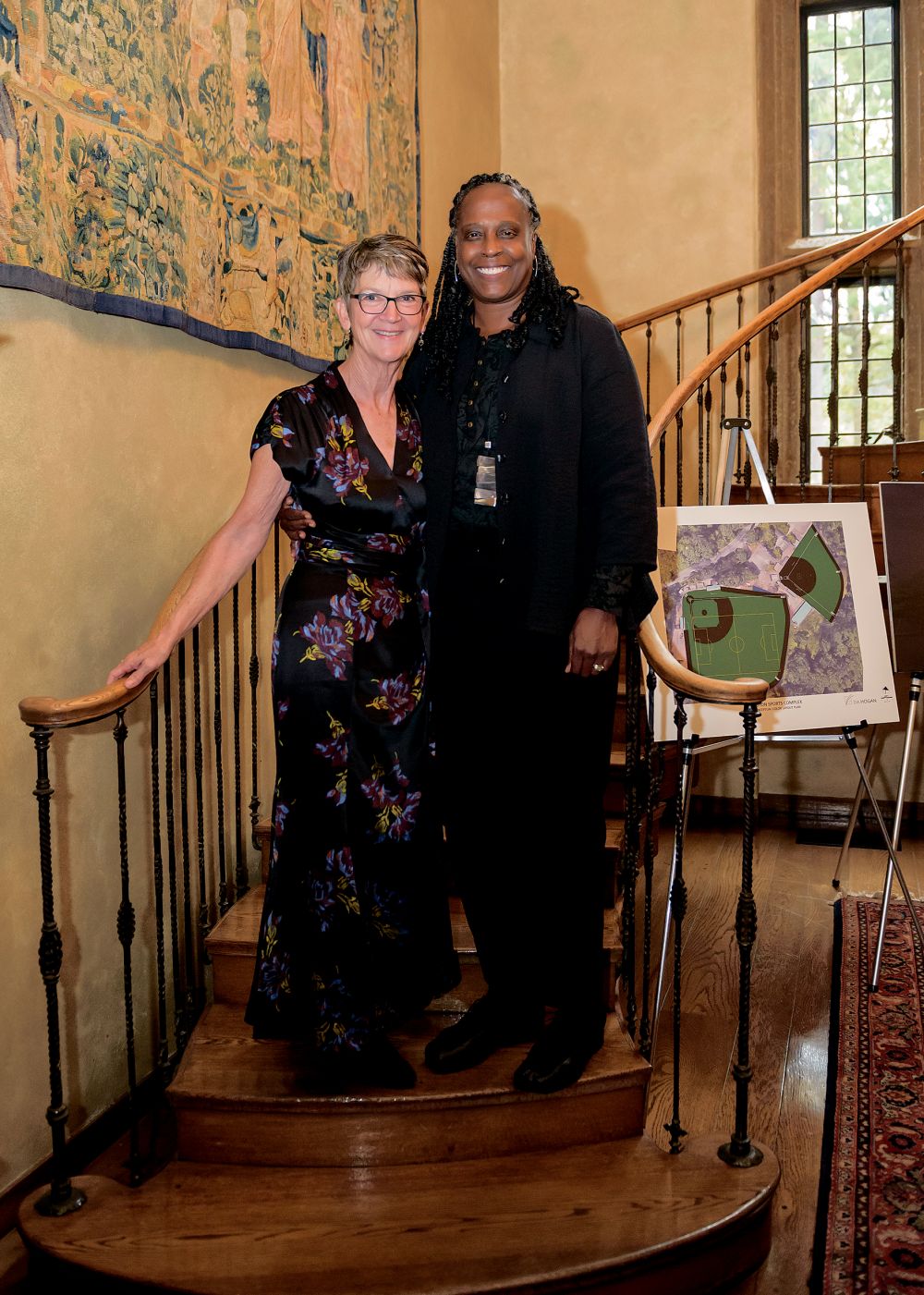A Historic Appointment of a Proven Leader
Lewis & Clark welcomes Dr. Robin Holmes-Sullivan as its new president.
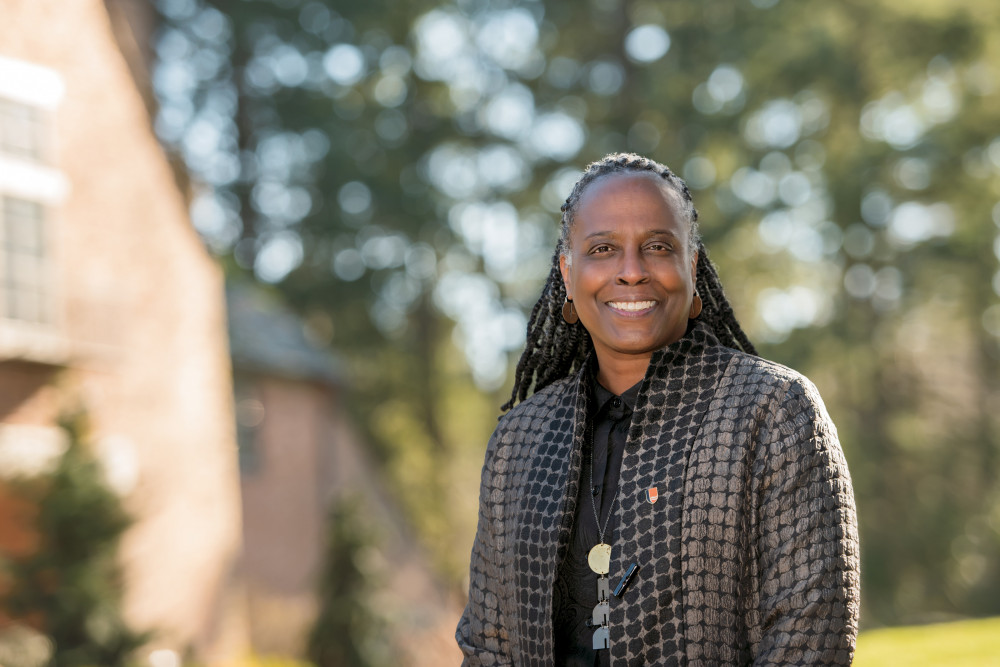
Credit: Nina Johnson
Dr. Robin Holmes-Sullivan is the first woman and first person of color to serve as Lewis & Clark’s president in the institution’s 155-year history. She takes on this role after serving as L&C’s vice president for student life and dean of students for three years, during which time she demonstrated a commitment to creative leadership, secured funding for an improved student experience, and developed meaningful long-term plans for the entire Division of Student Life.
Holmes-Sullivan came to Lewis & Clark from the University of California, where she served as vice president for student affairs with responsibilities across the 10-campus, 200,000-student system. Previously, she spent 25 years at the University of Oregon, ultimately serving as vice president of student life, a position she held for nine years. Holmes-Sullivan also maintains a private clinical psychology and consulting practice.
Holmes-Sullivan earned her bachelor’s and master’s degrees from California State University at Fullerton, and a second master’s from the California School of Professional Psychology. She earned her PhD in clinical psychology from the California School of Professional Psychology in 1992.
A Long Career of ‘Firsts’
There are relatively few women—and even fewer women of color—who lead our nation’s colleges and universities. How do you view your presidency in this landscape?
This isn’t the first time I’ve been the “first.” It’s been the case in every leadership role I’ve held. I haven’t always been the first woman but definitely the first person of color. I have that lived experience of being the first and what that means, how people perceive me, and what they expect. I’ve already experienced dealing with some of the unconscious bias that people naturally have. I have developed, I think, a good amount of emotional tolerance for that.
Your question gets back to the concept of representation and being— if you see something over and over again, it can either have a positive impact or a negative impact. It wasn’t until I was in my second year of graduate work in clinical psychology that I had my first professor of color who was a clinical psychologist. I remember feeling finally like, “Oh, maybe I can do this.” Up until that point, I had a lot of questions. Finally seeing that representation definitely had an impact. That’s another reason why it’s so important for me to step up to this leader- ship challenge … I don’t know who I might be able to influence or help when they need it, but I want to be available for that opportunity.
An Experienced Leader at L&C
You come to this position from a long career of leadership roles in student affairs. What are the benefits to arriving at the presidency from this nontraditional route?
I think my training in student affairs, which I’ve been in really my whole career, is a great advantage. As a vice president of student life, you oversee a large portfolio of activities, programs, and services—everything from mental health services to career preparation to inclusion and equity issues. You also invest a lot of time managing through crises and difficult issues, as well as trying to make an environment that is both welcoming and supportive of all the folks in the community. Many of these duties require skills that sound a lot like those of a college president. I think the reason we’re seeing more folks from the student affairs side ascend to the presidency is because of that preparation and because of where we are as a country right now.
FUN FACTS About Robin
A ‘base brat’— I was born in South Carolina, the fourth of five children. My father was a marine and moved around to different bases before I was born. We ended up returning to one of those bases—El Toro Marine Base in Southern California—when I was around 3 years old. From then on, we stayed in California. I was a base brat.
Basketball standout—When I was growing up, the first thing I wanted to be was a professional basketball player. The second thing I wanted to be was a psychologist. As a kid, almost daily, I had a basketball on my hip. Basketball was my love, and we were a basketball family. My mom was a fantastic player. She could beat me in basketball until I was about 13 years old. I played Division I basketball at Cal State, Fullerton. I was a starter for all four years. It’s a sport I still enjoy watching—not playing any- more because my knees are completely shot.
Harley—People are really intrigued by my Harley. Now that I live closer to campus, I’ll be riding it even more often. I’m not super adventuresome by nature, but I love speed.
Adult children—We have two grown sons, a daughter-in-law, and a grandchild. I could talk about them forever … I just adore them. Nate is 32, and he and his part- ner, Kaitlyn, just had their first child, Kayden, who’s 2 and an abso- lute delight. Josh is 28. Nate and his family just moved to Bend from Colorado, and Josh lives in Redmond, so both of them are now in Central Oregon. We’re thrilled to have everyone all in one place.
You’ve served on L&C’s senior leadership team since 2019, so you’re extremely familiar with the institution. What do you think are L&C’s particular strengths and challenges?
Without a doubt, one of the first strengths that comes to mind is our excellent academic offerings. You see that across all three schools. They’re just fantastic. The fact that we have three distinct schools, three ways of offering education, is unique for a small liberal arts college.
Obviously, there are some places where we can improve. Like many other institutions across the country, we’re seeing the impacts of the “Great Resignation.” I hope we’ll be able to meet that challenge by addressing what it’s like to work here at Lewis & Clark. What makes this place special? Why would you want to stay? How do we make Lewis & Clark the employer of choice in the Portland area and beyond? I’m excited to turn some attention to that.
Also, while I think our academic offerings are excellent, I want to continue working on enhancing the overall student experience, espe- cially at the undergraduate level, so that students are always learning, whether they’re inside or outside the classroom. It means turning our attention to the environment. That’s something we’ve started address- ing by increasing and improving our infrastructure and buildings but also all the programming that goes into making Lewis & Clark a place where students want to be. That’s a challenge we’re going to continue to meet head-on.
You’ve been meeting with many L&C stakeholders, including alumni. What are you hearing from them?
Here’s one thing that is absolutely for sure: The alums of Lewis & Clark love this college. They feel good about the college’s direction and want us to do well. There’s a real sense of optimism, positiveness, and just love for this place. It’s always fun to be around them because they’re reminiscing about their experiences, and, at the same time, helping me better understand the history of the institution. I love having those connections.
Looking Forward
What’s on your to-do list?
In terms of the external priorities, job number one is to finish up our fundraising campaign. We are so close—we’re within striking distance. It’s super important for what we’re doing, how we see ourselves, and how others see us. Job number two is to continue fostering our good reputation and our good connections. It’s about getting on the road— meeting alums, interacting with important friends, and telling the story of the college.
Internally, we’ll be focusing on goals that enable us to build an even stronger sense of the L&C community. Last year, for example, we started some community dialogues around difficult topics. I’ve been in discussion with others on campus about how to build a stronger infrastructure to make these discussions part of our culture. We want a culture that supports conveying ideas and opinions but does so in a way that allows us to stay in community. I think that’s so important, not only for Lewis & Clark but also for our country. I would love for us to be seen as a national model of a college that has really strong, good dialogues around difficult topics while still staying connected to one another.
You’ve said that “the themes of equity and inclusion will be cornerstones of what we will strive to accomplish at L&C.” What’s your vision for this?
I want to focus on how we make a community that is both diverse in lots of different ways, but also very equitable and inclusive. I think that’s the type of environment where we’ll be able to do our very best work. It should be something we’re all striving for—not just in theory, but in actual practice.
We recently hired Dr. Danielle Torres, a member of our graduate school faculty, as the first full-time dean for equity and inclusion in the college’s history. She reports directly to me, and together with others on campus, we’re developing important goals that fit Lewis & Clark and help us move the needle on equity and inclusion.
We also want to make sure we have the type of community that feels welcoming and supportive so that others will want to come. We want to add as many faculty and staff from underrepresented groups as we possibly can, and we also want to recruit students from a variety of backgrounds who will be successful here.
-
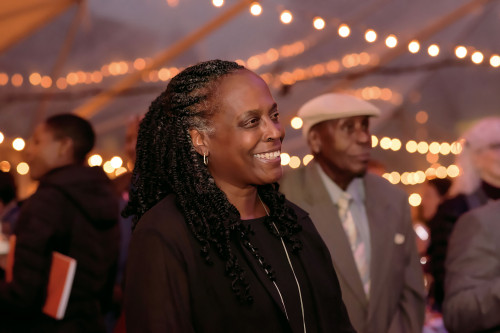 Credit:
Credit:Nina Johnson
-
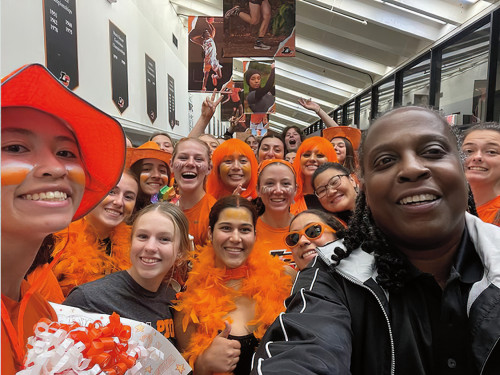 Credit:
Credit:Nina Johnson
-
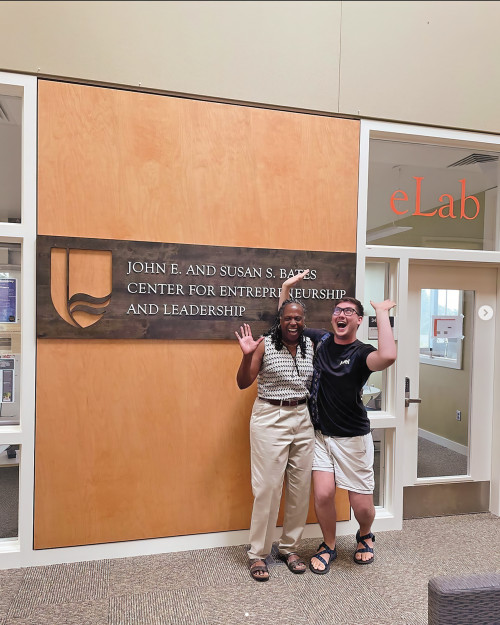 Credit:
Credit:Nina Johnson
-
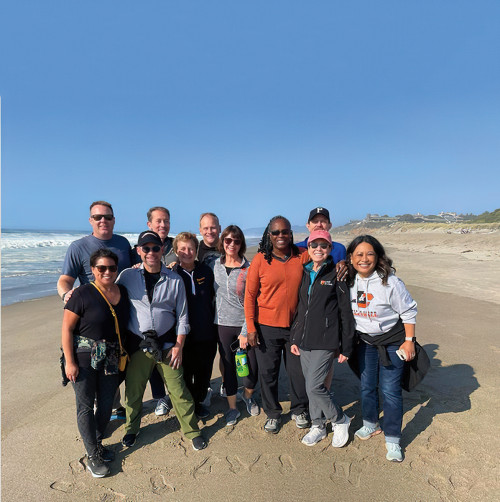 Credit:
Credit:Nina Johnson
-
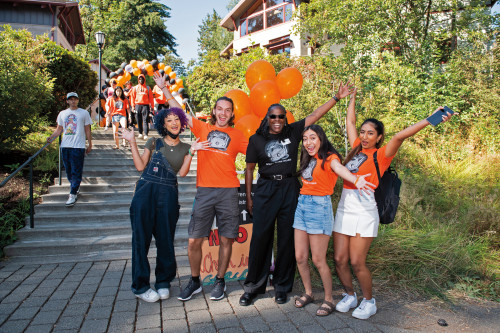 Credit:
Credit:Nina Johnson
-
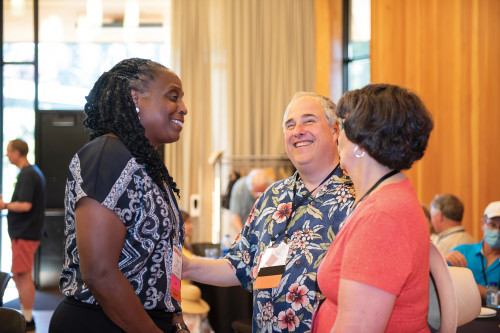 Credit:
Credit:Nina Johnson
-
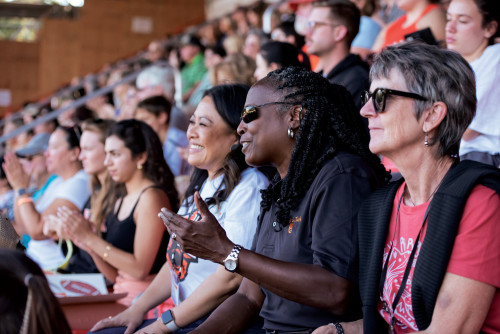 Credit:
Credit:Nina Johnson
-
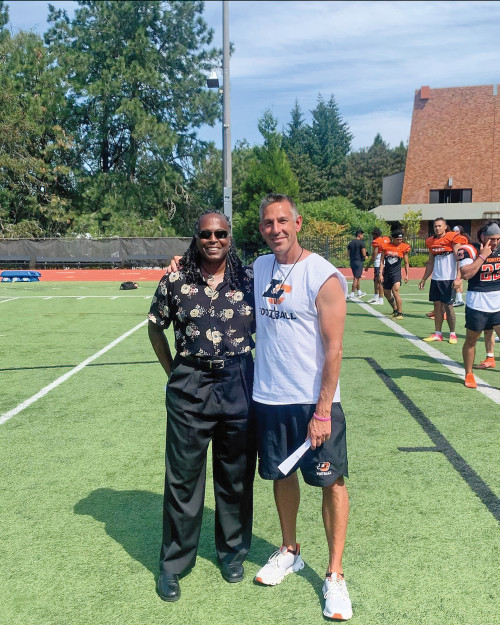 Credit:
Credit:Nina Johnson
Photos by Nina Johnson
What’s another area you want to work on?
As an institution, we are very humble. That’s an admirable trait in many ways, but we sometimes have a hard time tooting our own horn. We need to ask the question, “Where are our areas of excellence and how do we make sure they are known not just on our campus but across the nation?”
How do you view the college’s relationship with Portland?
We’re already doing some really good things. Our law school runs various clinics that are very helpful to Portlanders, and our graduate school educates leaders who are well represented in the local education and counseling communities. We recently launched a new Center for Social Change and Community Involvement. As part of that effort, we’ve significantly improved our partnerships with various local nonprofits and nongovernmental agencies where our students will have opportu- nities for internships, service learning, and civic engagement. Our outreach to Portland is something that will absolutely continue and is important.
As a new president, are you planning to engage in a strategic planning process with the L&C community?
I absolutely love strategic planning! There’s no way that you can achieve goals if you don’t have a plan. People need to understand where we’re trying to go and how we’re going to get there. We’ll soon be finishing our fundraising campaign, which will be the perfect time to develop a new strategic plan. I’m looking forward to it. I think it’s a strong suit of mine.
What are the biggest challenges facing higher education in general and liberal arts institutions specifically?
Many liberal arts institutions are facing enrollment challenges. From there, of course, those challenges have an impact on the overall resources of the institution. I’m happy to report that we’re coming off a second straight year of record enrollment for the undergraduate college and very solid enrollments in our graduate school and law school. So far, we have not experienced some of the challenges facing other liberal arts institutions over the last couple of years. Something’s going on here that’s pretty special. I’m going to try not to break it. ■
Meet Kathy Holmes-Sullivan
Kathy Holmes-Sullivan grew up in the Pacific Northwest, with an affinity for forests, water- falls, and wine country. Her partner, Robin, spent her formative years in California, amid palm trees, sunny skies, and a busy urban area of more than 3.5 million people. “We have really different cultural backgrounds,” says Kathy, “But our shared values and shared goals make it easy for us to have a fulfilling partnership.”
Kathy attended Pacific Lutheran University in Tacoma. After graduating with degrees in psychology and English, she headed to Portland State University and became a licensed clinical social worker.
Kathy and Robin met in 1993, when both were working at the counseling center at the University of Oregon in Eugene. “Robin has always been a driven person—goal oriented, focused, and passionate about what she wants to do,” says Kathy. When it became clear Robin had her eye on the counseling center’s director job at U of O, Kathy decided to pursue a different direction. She opened a successful private practice, which gave her better flexibility to raise their two sons and continue her passion of helping others.
When Robin accepted a new position at the University of California in 2016, their kids were grown and out of the house. Kathy started working at the University of California at Davis, consulting and teaching seminars on mental health and well-being. In 2019, when Robin joined Lewis & Clark as the head of the Division of Stu- dent Life, Kathy became an adjunct instructor at the college, preparing students for their role as peer mentors in L&C’s new Pioneer Support Network. This student-led effort, which is part of L&C’s Center for Community and Global Health, is designed to support student mental health and well-being. “My role was really to help them figure out best practices, identify campus resources, and get the program off the ground,” says Kathy.
Now that Robin is president of Lewis & Clark, Kathy is looking ahead to what’s next. “My new goal is to help Robin and serve the L&C community as best I can,” she says.
Kathy is particularly interested in supporting parents, a group she worked with during Robin’s vice presidency at the University of Ore- gon. She also plans to continue assisting with peer mentoring and mental health issues that challenge the campus community.
In terms of the big picture, Kathy looks forward to engaging with people from all parts of the L&C community. “Robin and I want to work on being as inclusive as we can,” says Kathy. “It’s a big goal for both of us. We want people to understand that they’re part of something important.” ■
The Inauguration of Dr. Robin Holmes-Sullivan
-
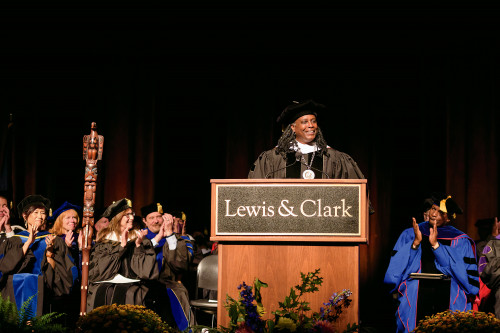 Dr. Robin Holmes-SullivanCredit:
Dr. Robin Holmes-SullivanCredit:Nina Johnson
-
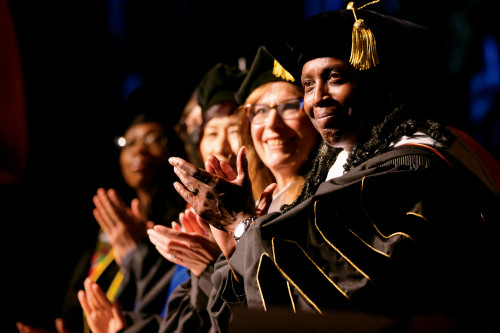 Credit:
Credit:Nina Johnson
-
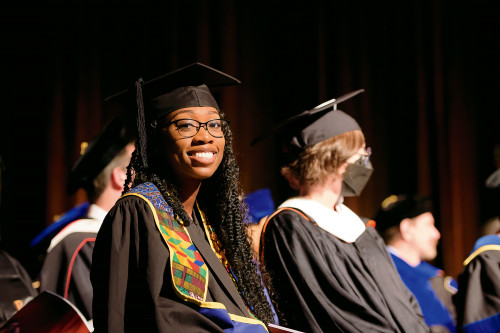 Asia Wooten BA '20, research assistant, OHSUCredit:
Asia Wooten BA '20, research assistant, OHSUCredit:Nina Johnson
-
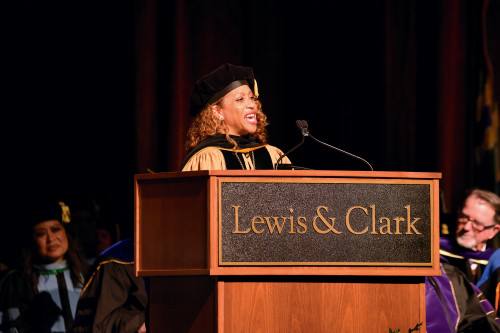 Lori S. White, president, DePauw UniversityCredit:
Lori S. White, president, DePauw UniversityCredit:Nina Johnson
-
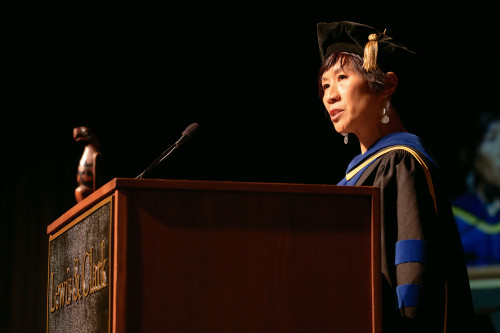 Mia Tuan, dean, University of Washington College of EducationCredit:
Mia Tuan, dean, University of Washington College of EducationCredit:Nina Johnson
-
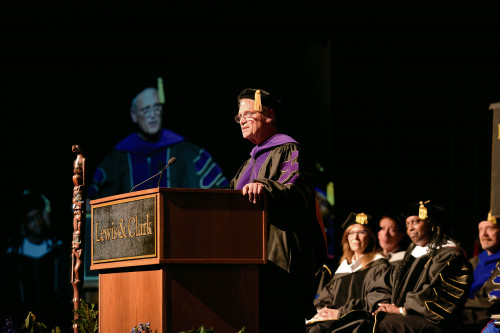 U.S. Representative Earl Blumenauer BA ’70, JD ’76Credit:
U.S. Representative Earl Blumenauer BA ’70, JD ’76Credit:Nina Johnson
-
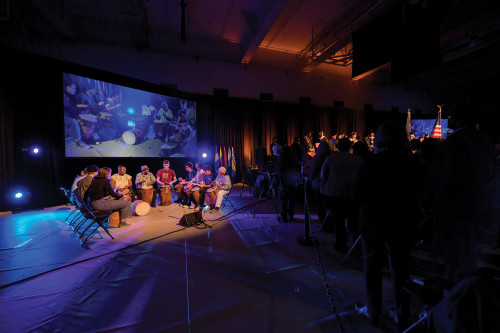 Credit:
Credit:Nina Johnson
-
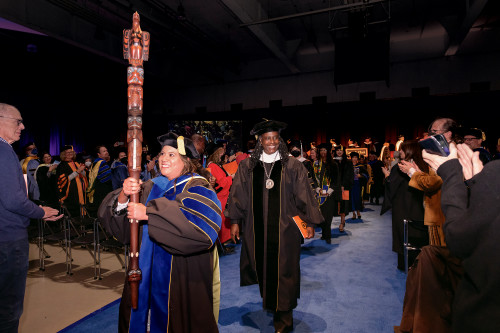 Credit:
Credit:Nina Johnson
-
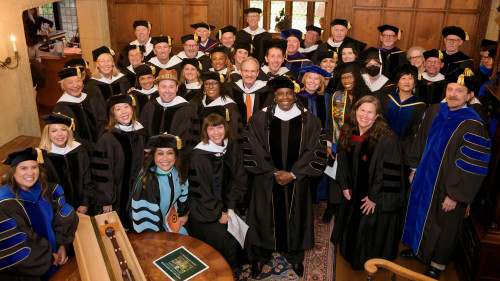 Credit:
Credit:Nina Johnson
-
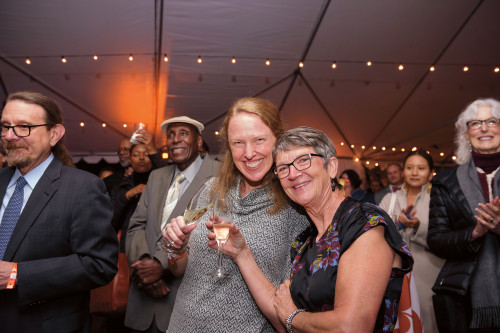 Credit:
Credit:Nina Johnson
-
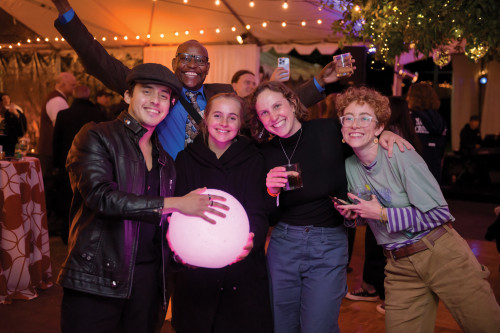 Credit:
Credit:Nina Johnson
L&C Magazine is located in McAfee on the Undergraduate Campus.
MSC: 19
email magazine@lclark.edu
voice 503-768-7970
fax 503-768-7969
The L&C Magazine staff welcomes letters and emails from readers about topics covered in the magazine. Correspondence must include your name and location and may be edited.
L&C Magazine
Lewis & Clark
615 S. Palatine Hill Road
Portland OR 97219
More Stories

Shifting Gears
After a remarkable 51-year career in politics, Rep. Earl Blumenauer BA ’70, JD ’76 prepares to retire, leaving behind a sprawling legacy reflecting his commitment to livable communities, transportation, the environment, cannabis legalization, animal rights, health care, and more.

Data Processors
In a cross-school collaboration, Professors Greta Binford and Liza Finkel prepare middle and high school teachers to weave real-world data science into their environmental curricula.

Advantage: Lewis & Clark
The first phase of Lewis & Clark’s strategic planning effort sets the stage for institutional distinction. The new process is iterative and dynamic— responsive to a world that won’t stand still.

Musical Note: Good vibrations
What’s better than hearing music? Feeling it!
